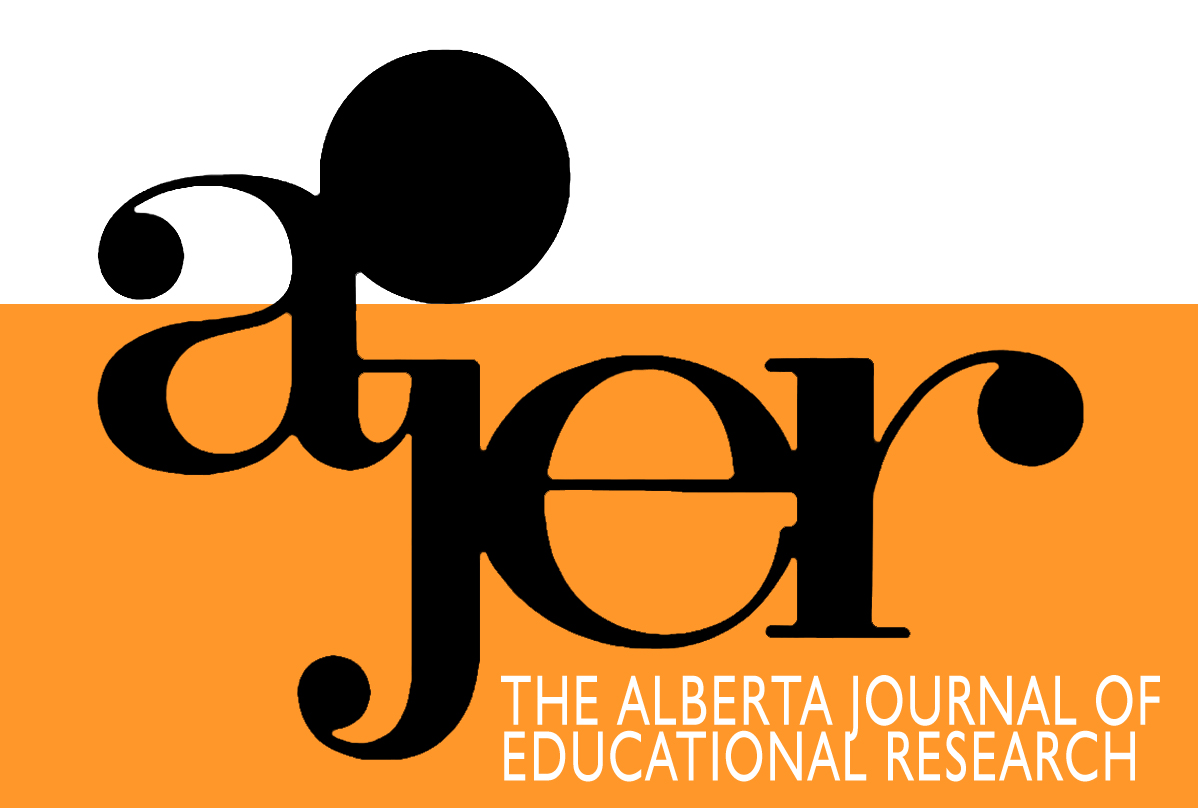Deciding Whether to Respond: A Latent Class Analysis of Nonresponse on Ontario’s Grade 9 Assessment of Mathematics
DOI:
https://doi.org/10.55016/ojs/ajer.v64i1.56472Keywords:
Nonresponse, missing data, mathematics, large-scale assessment, latent class analysis, Mots clés, absence de réponse, données manquantes, mathématiques, évaluation à grande échelle, analyse de structure latenteAbstract
This study investigates nonresponse on Ontario’s Grade 9 Assessment of Mathematics – in particular, whether or not students responded to all multiple-choice or all open-response items in two test booklets. Whether students responded to all items of one type (multiple-choice or open-response) by booklet (for the first or second day of testing) was modeled, with and without proportion correct scores by item type as covariates, using latent class analysis. Both a 3-class model without the covariates and a 4-class model with the covariates but without direct effects distinguished among students who responded to all items, students who left both multiple-choice and open-response items blank, and students who left only open-response items blank. The results suggest that deciding to respond to all open-response items is distinct from deciding to respond to all multiple-choice items. Attitudes toward mathematics were also more related to the decision to respond to all open-response items than to the decision to respond to all multiple-choice items.
Cette étude porte sur l’absence de réponse au test de mathématiques pour la 9e année en Ontario –nous cherchions notamment à savoir si les élèves avaient répondu à toutes les questions à choix multiples ou bien à toutes les questions ouvertes dans deux livrets d’examen. Une analyse de structure latente a permis la modélisation du comportement des élèves, à savoir s’ils avaient répondu à tous les items d’un type (questions à choix multiples ou questions ouvertes) dans un livret (lors du premier ou deuxième jour des tests) avec et sans des scores reflétant la proportion de bonnes réponses par type d’items comme covariables. Un modèle de classe 3 sans les covariables ainsi qu’un modèle de classe 4 avec les covariables mais sans effets directs ont tous les deux fait la distinction entre les élèves qui avaient répondu à tous le items, les élèves qui n’avaient ni répondu à certaines questions à choix multiples ni à certaines questions ouvertes et les élèves qui n’avaient pas répondu à certaines questions seulement dans le cas des questions ouvertes. Les attitudes face aux mathématiques ont également joué un plus grand rôle dans la décision de répondre à toutes les questions ouvertes que dans celle de répondre à toutes les questions à choix multiples.
Downloads
Downloads
Published
How to Cite
Issue
Section
License
UNIVERSITY OF ALBERTA COPYRIGHT LICENSE AND PUBLICATION AGREEMENT
If accepted, authors will be asked to sign a copyright agreement with the following points:
A. Where there is any inconsistency between this Copyright License and Publication Agreement and any other document or agreement in relation to the same subject matter, the terms of this Agreement shall govern.
B. This document sets out the rights you are granting in relation to publication of your article, book review, or research note entitled (the “Article”) through inclusion in the academic journal titled Alberta Journal of Educational Research (the “Journal”) published through the Faculty of Education, representing the Governors of the University of Alberta (the “Journal Editor”).
C. There will be no payment to you for this publication and grant of rights. In consideration of the agreement to publish the Article in the Journal:
1. You are warranting that:
- the content of the Article is your original work, and its content does not contain any material infringing the copyright of others; or, where the Article is not entirely your original work, you have obtained all necessary permissions in writing to grant the rights you are giving in this agreement;
- the content of the Article does not contain any material that is defamatory of, or violates the privacy rights of, or discloses the confidential information of, any other person;
- the Article has not been published elsewhere in whole or in part, and you will not allow publication of the Article elsewhere without the consent of the Journal Editor;
- the names of all co-authors and contributors to the Article are:
2. You agree to license the copyright in the Article to the Journal Editor, on a worldwide, perpetual, royalty free basis; and to the extent required by the terms of this agreement. You shall retain the right at all times to be acknowledged as the/an author of the Article.
3. You further agree that the Journal Editor has the entitlement to deal with the Article as the Journal Editor sees fit, and including in the following manner;
- The right to print, publish, market, communicate and distribute the Article and the Journal, in this and any subsequent editions, in all media (including electronic media), in all languages, and in all territories, ing the full term of copyright, and including any form of the Article separated from the Journal, such as in a database, abstract, offprint, translation or otherwise, and to authorize third parties to do so;
- The right to register copyright of the Journal;
- The right to edit the Article, to conform to editorial policy as the Journal Editor sees fit.
4. If any co-author or contributor to the Article does not sign this agreement, the Journal Editor reserves the right to refuse to publish the Article.



